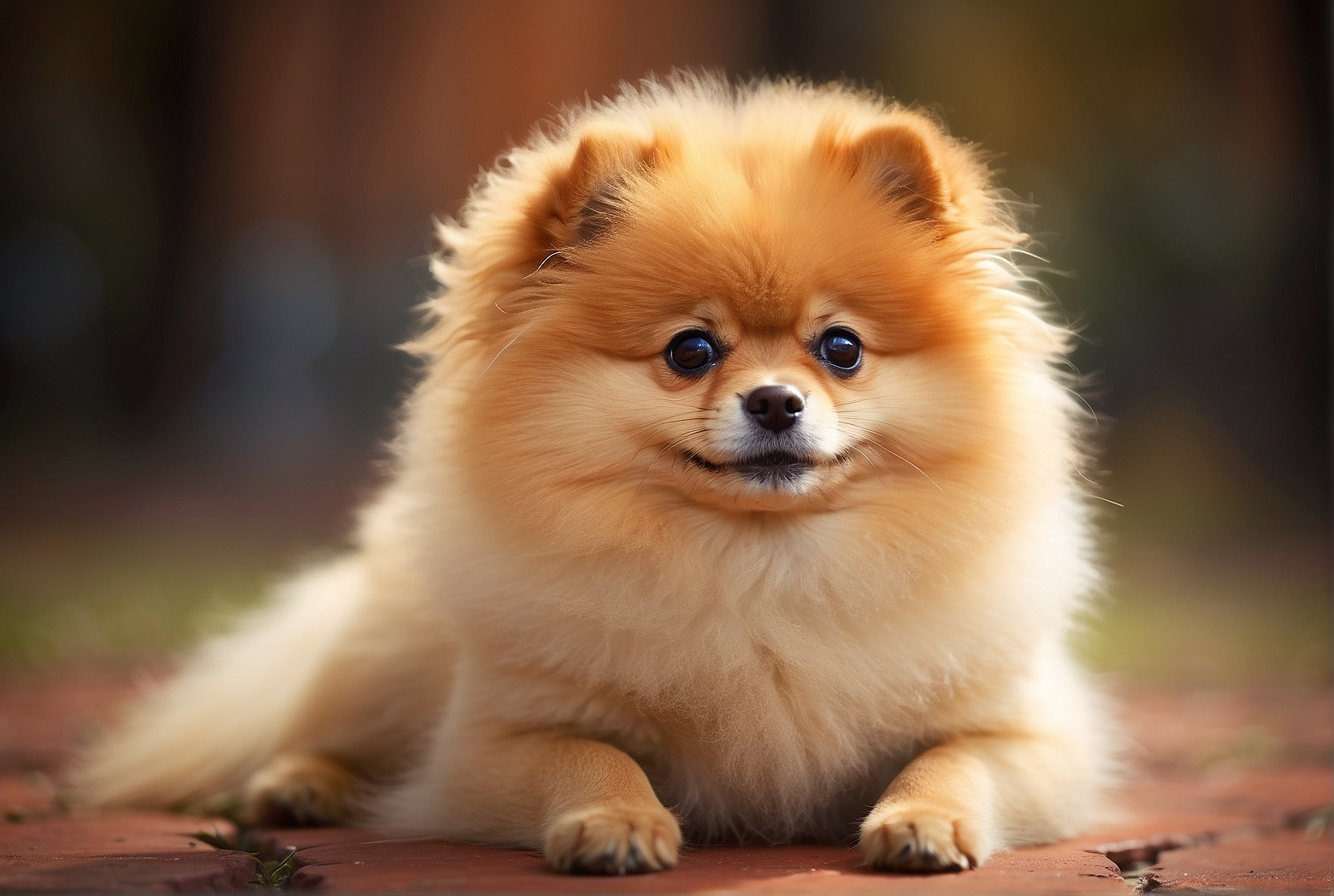Imagine a world filled with fluffy, energetic, and oh-so-adorable Pomeranians wherever you turn. These tiny furballs have captured the hearts of dog lovers worldwide, but have you ever wondered just how many of these precious pups are actually out there? Brace yourself for some surprising numbers as we delve into the population of Pomeranians worldwide. From bustling cities to quaint countryside homes, these pint-sized pooches are making their mark on the global canine community in ways you wouldn’t expect. So prepare to be amazed by the sheer popularity and widespread presence of these lovable little bundles of fur.
Pomeranians: An Introduction
Pomeranians are a small and beloved dog breed that has captured the hearts of people all over the world. With their fluffy coats, playful personalities, and compact size, it’s no wonder that Pomeranians are a popular choice for many dog lovers. In this comprehensive article, we will explore the history, characteristics, temperament, population, popularity, breeding, health, adoption, and future outlook of Pomeranians. So, whether you are a proud Pomeranian owner, considering adding one to your family, or simply interested in learning more about these delightful dogs, this article will provide you with all the information you need.
The History of Pomeranians
Pomeranians have a rich history that dates back several centuries. They originated in the Pomerania region, which is located in modern-day Poland and Germany. Initially, Pomeranians were larger in size and were used as working dogs. They were commonly used for herding, pulling sleds, and guarding livestock. However, over time, selective breeding resulted in the development of a smaller and more compact Pomeranian, which eventually became the breed we know and love today.
Characteristics of Pomeranians
Pomeranians are known for their tiny size, weighing between 3 and 7 pounds on average. Despite their small stature, Pomeranians are sturdy and well-proportioned dogs. They have a distinctive fox-like face with bright, expressive eyes and a plume-like tail that often curls over their back. Their double-layered coat is one of their most recognizable features, with a dense undercoat and a long, fluffy topcoat that comes in a wide array of colors. Pomeranians require regular grooming to maintain their coat’s health and appearance.
Pomeranian Temperament
Pomeranians are often described as spirited, alert, and intelligent. They are highly curious and enjoy exploring their surroundings. Despite their small size, Pomeranians have a big personality and are known to be confident and self-assured. They are extremely loyal to their owners, forming strong bonds with their human family members. Pomeranians can also be vocal and make excellent watchdogs, alerting their owners to any potential threats or intruders. However, they may sometimes exhibit territorial behavior if not properly trained and socialized from a young age.
Pomeranian Population Worldwide
Global Pomeranian Population Estimate
It is challenging to provide an exact estimate of the global Pomeranian population due to various factors such as unregistered Pomeranians and the prevalence of backyard breeding. However, Pomeranians are undeniably a popular breed across the globe, with a significant presence in many countries. While a precise figure is elusive, it is safe to say that Pomeranians have a substantial population worldwide.

Regional Distribution of Pomeranians
Pomeranians can be found in numerous countries, spanning continents and cultures. They have a widespread distribution, with notable populations in North America, Europe, Australia, and Asia. Within these regions, Pomeranians are particularly popular in the United States, the United Kingdom, Germany, and Japan. Their popularity can be attributed to their adorable appearance, adaptable size, and suitability for both urban and rural living.
Factors Affecting Pomeranian Population
Several factors influence the Pomeranian population on a regional and global scale. Trends in dog ownership and breed preferences play a significant role in the breed’s popularity. Additionally, breeding regulations, import/export restrictions, and cultural attitudes towards pets can all impact the number of Pomeranians in a specific area. Furthermore, the availability of reputable breeders, adoption programs, and rescue organizations also contribute to the overall population of Pomeranians.
Pomeranian Popularity
Pomeranians as Family Pets
Pomeranians are highly popular as family pets due to their compact size, affectionate nature, and adaptability. They thrive in households of all sizes, whether in apartments, suburban homes, or large estates. Pomeranians are known to be excellent companions for both individuals and families, bringing joy, laughter, and unconditional love to their owners. However, it is essential to note that Pomeranians may not be suitable for families with very young children due to their delicate size and potential for injury.
Celebrities and Pomeranians
Pomeranians have caught the attention of numerous celebrities and have become a popular choice among the rich and famous. Celebrities such as Paris Hilton, Nicole Richie, and Kylie Jenner have showcased their love for Pomeranians through social media and public appearances. These adorable dogs have become accessories to celebrity lifestyles, often seen accompanying their famous owners to red carpet events, shopping trips, and luxurious vacations. The influence of celebrities in popularizing Pomeranians cannot be underestimated.
Social Media Influences on Pomeranian Popularity
In recent years, social media platforms like Instagram and TikTok have played a significant role in increasing the popularity of Pomeranians. With their photogenic looks and entertaining personalities, Pomeranians have become social media stars, accumulating millions of followers and captivating audiences worldwide. The viral nature of social media has undoubtedly contributed to the breed’s popularity, as captivating images and videos of Pomeranians spread rapidly across the internet.
Pomeranians as Registered Breeds
Pomeranian Kennel Clubs and Associations
Pomeranians are recognized as a breed by various kennel clubs and associations worldwide. The American Kennel Club (AKC), the United Kennel Club (UKC), and the Fédération Cynologique Internationale (FCI) are among the most respected organizations that officially recognize and register Pomeranians. These kennel clubs provide breed standards, pedigree documentation, and organize dog shows and competitions that showcase the finest examples of the breed.

Official Pomeranian Breed Standards
Breed standards outline the physical and behavioral attributes that define a Pomeranian. These standards serve as a guideline for breeders, judges at dog shows, and potential owners. According to the AKC breed standard, adult Pomeranians should ideally weigh between 3 and 7 pounds, stand 6 to 7 inches tall at the shoulder, and possess a luxurious double coat with a plume-like tail that is set high and lies flat against the back. Additionally, the breed standards emphasize traits such as alertness, intelligence, and an animated gait.
Challenges in Maintaining Breed Integrity
Maintaining breed integrity can be a complex task for Pomeranian enthusiasts and breeders. Concerns such as improper breeding practices, overemphasis on physical appearance at the expense of health, and the prevalence of puppy mills pose significant challenges. Responsible breeders focus on preserving the breed’s characteristics while prioritizing the health and well-being of their dogs. Educating potential Pomeranian owners about the importance of responsible breeding practices is crucial to ensuring the long-term health and vitality of the breed.
Pomeranian Breeding and Reproduction
Pomeranian Breeding Practices
Breeding Pomeranians requires careful consideration to ensure the health and genetic diversity of the breed. Ethical breeders select mating pairs based on factors such as temperament, health, and conformity to breed standards. They conduct health screenings to rule out hereditary diseases and may seek the expertise of veterinarians or genetic specialists to minimize the risk of passing on genetic disorders. Breeding Pomeranians should be undertaken responsibly and with a commitment to preserving the breed’s quality and well-being.
Average Pomeranian Litter Size
Pomeranians typically have a small litter size, ranging from one to five puppies on average. However, it is essential to note that individual variations are common, and factors like the age and health of the mother can influence litter size. Pomeranian puppies are incredibly tiny at birth and require special care and attention during the early stages of life to ensure their survival and well-being.
Health Considerations in Pomeranian Breeding
Ensuring the overall health of Pomeranians is paramount in breeding practices. Common health concerns in the breed include dental issues, patellar luxation, tracheal collapse, and heart problems. Responsible breeders prioritize the health of their dogs, conducting health screenings, providing proper nutrition, and offering regular veterinarian check-ups. By selecting only healthy dogs for breeding, breeders can help minimize the risk of passing on genetic disorders, leading to healthier and happier Pomeranians.
Pomeranian Health and Lifespan
Common Health Issues in Pomeranians
Despite their small size, Pomeranians can be prone to certain health issues. Dental problems, including tooth decay and gum disease, are prevalent due to their small mouths and overcrowded teeth. Patellar luxation, a condition characterized by the displacement of the kneecap, is also relatively common in Pomeranians. Additionally, Pomeranians are known to be susceptible to tracheal collapse, a condition that affects their windpipe and can lead to respiratory difficulties. Regular veterinary care, dental hygiene, and a balanced diet are essential for maintaining the overall health of Pomeranians.
Pomeranian Lifespan
On average, Pomeranians have a lifespan of 12 to 16 years. However, with proper care, a healthy diet, regular exercise, and routine veterinary check-ups, some Pomeranians have been known to live well into their late teens. Genetics, lifestyle factors, and the overall health management provided by their owners significantly impact a Pomeranian’s lifespan. Investing in the well-being of a Pomeranian throughout their life can contribute to a long and happy companionship.
Healthcare Requirements for Pomeranians
To keep Pomeranians in optimal health, regular healthcare is essential. This includes routine vaccinations, annual check-ups, dental care, parasite prevention, and a nutritious diet. Pomeranians require appropriate exercise to maintain a healthy weight and keep their minds stimulated. Grooming is also an important aspect of their healthcare, involving brushing their coat to prevent matting and regular nail trims. Adhering to these healthcare requirements will go a long way in promoting the well-being of Pomeranians.
Pomeranian Adoption and Rescue
Pomeranian Rescue Organizations
For those considering adopting a Pomeranian, there are several rescue organizations dedicated to finding loving homes for Pomeranians in need. These organizations work tirelessly to rescue Pomeranians from unfortunate circumstances such as neglect, abuse, or abandonment. They provide essential medical care, rehabilitation, and socialization to prepare Pomeranians for their forever homes. By adopting a rescued Pomeranian, not only do you provide a second chance at life to a deserving dog, but you also experience the joy of welcoming a grateful and loving companion into your home.
Adopting a Pomeranian
When adopting a Pomeranian, it is important to carefully consider factors such as your lifestyle, family situation, and the commitments involved in caring for a dog. Researching reputable rescue organizations and visiting their facilities can provide valuable insights into the dogs available for adoption. The adoption process typically involves completing an application, home visits, and paying an adoption fee. Adopting a Pomeranian is a rewarding experience and can create a lifelong bond with a dog in need.
Benefits and Considerations of Pomeranian Adoption
Adopting a Pomeranian offers numerous benefits to both the dog and the adopter. By providing a loving home to a rescued Pomeranian, you are offering a second chance at life to a dog that may have had a difficult start. Additionally, adopting a Pomeranian from a reputable rescue organization often means that the dog has received necessary medical care, vaccinations, and behavioral assessment. However, it is important to consider the individual needs of the dog, including any potential behavioral issues or medical conditions that may require ongoing care and attention.
AKC Pomeranian Registration Statistics
Pomeranian Registration Trends
The American Kennel Club (AKC) maintains registration statistics for various dog breeds, including Pomeranians. These statistics indicate the popularity of Pomeranians within the United States and provide insights into trends in breed ownership. While specific registration figures can fluctuate annually, Pomeranians have consistently remained among the top registered breeds in recent years, reflecting their enduring popularity.
Most Popular Pomeranian Colors
Pomeranians come in a wide range of colors, adding to their visual appeal. The AKC recognizes numerous color variations in Pomeranians, with orange and red being the most prevalent and iconic colors associated with the breed. Other recognized colors include black, blue, chocolate, cream, sable, and merle, among others. Color preferences may vary among individual owners, with some favoring specific shades or patterns in their Pomeranians.
Pomeranian Show Competitions
Pomeranians are a favorite in dog show competitions due to their distinctive appearance and breed-specific attributes. Dog shows provide opportunities for Pomeranian owners to showcase their dogs and compete against other Pomeranians for titles and recognition. These competitions assess the dogs’ adherence to breed standards, handling skills, and overall presentation. Pomeranians consistently make a strong presence in the show ring, mesmerizing judges and audiences with their elegance and charm.
Pomeranians in Other Countries
Pomeranian Popularity in the United States
In the United States, Pomeranians have enjoyed enduring popularity and have consistently ranked among the top registered breeds. Their small size, adaptability to urban living, and affectionate nature make them a popular choice for pet owners of all ages. Pomeranians can be found in households across the country, residing in diverse environments ranging from bustling cities to suburban neighborhoods and rural communities.
Pomeranian Popularity in the United Kingdom
Similar to their popularity in the United States, Pomeranians have a significant presence in the United Kingdom. Their delightful appearance, playful personalities, and adaptability to various lifestyles have made them a favored breed among British dog lovers. Pomeranians are often seen strutting the streets of London or enjoying the scenic countryside alongside their doting owners. Their popularity is further boosted by the influence of British celebrities and social media influencers who showcase their love for Pomeranians.
Pomeranian Popularity in Other Countries
Pomeranians have achieved a global following and can be found in numerous countries worldwide. Their adorable looks, charming personalities, and ability to fit into various living environments have contributed to their popularity beyond the United States and the United Kingdom. Countries such as Germany, Japan, Australia, Canada, and many more also have a significant Pomeranian population, each with its own unique culture and appreciation for these lovable dogs.
Future Outlook for Pomeranian Population
Trends in Pomeranian Ownership
The future outlook for the Pomeranian population is strongly influenced by trends in dog ownership. As people increasingly prioritize companionship and seek smaller-sized dogs that fit their lifestyles, Pomeranians are expected to maintain their popularity. The rise of urban living, where space may be limited, also favors the Pomeranian’s adaptability to apartment living. Furthermore, the influence of social media, celebrities, and the breed’s endearing qualities will likely continue to contribute to their continued popularity.
Pomeranian Breeding Regulations
Breeding regulations exist to ensure the responsible and ethical breeding of Pomeranians. These regulations aim to maintain the breed’s quality, health, and genetic diversity while mitigating the risk of hereditary diseases and promoting the overall well-being of the dogs. Breed clubs, kennel associations, and governing bodies such as the AKC play an essential role in establishing and enforcing these regulations to protect the integrity and long-term viability of the breed.
Potential Population Growth or Decline
The future population of Pomeranians may experience growth or decline influenced by various factors. As long as Pomeranians continue to captivate dog lovers worldwide with their charm, intelligence, and delightful personality, it is likely that their popularity will endure. However, responsible ownership, breeding practices, and education about the breed’s specific needs are crucial to ensure the sustainability and well-being of the Pomeranian population.
In conclusion, Pomeranians have made a remarkable impact on the dog world, capturing the hearts of people from all walks of life. Their rich history, unique characteristics, and endearing temperament have cemented their status as a beloved breed globally. As their future unfolds, Pomeranians will undoubtedly continue to bring joy, companionship, and smiles to the lives of countless individuals and families around the world.
